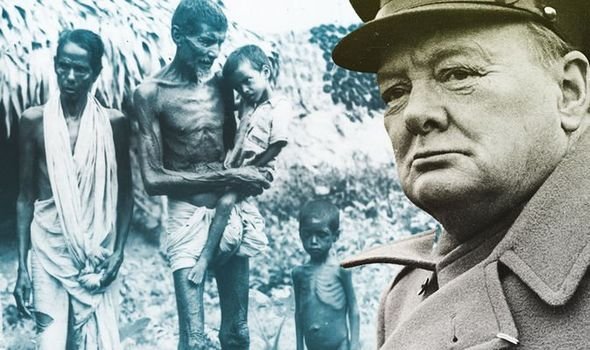Winston Churchill’s policies were responsible for Bengal famine


Everyone is aware that Winston Churchill was a notorious bigot, who is regarded as the person who started the disastrous Bengal Famine. Even during the “Black lives matter” agitation protestors painted “racist” beneath Churchill’s statue in London’s Parliament Square, and many people exhaled a sigh of relief.
The Bengal Famine of 1943, which resulted in the deaths of more than 5 million people, was not only brought on by drought but also by the complete policy failure of the time’s British Prime Minister Winston Churchill, according to a study published in the journal Geophysical Research Letters in 2019.
Churchill-era British policies were a substantial contributor to the catastrophe by showing that the 1943 Bengal famine was the only one in contemporary Indian history not to arise from severe drought.
Researchers from India and the US simulated the quantity of moisture in the soil during six significant famines that occurred on the subcontinent between 1873 and 1943 using weather data. One of the main signs of drought is a deficiency in soil moisture, which is caused by little rainfall and high temperatures.

Significant soil moisture deficiencies were associated with five of the famines. For instance, in 1896–1897, a large portion of north India experienced an 11% deficit, which coincided with nationwide food shortages that resulted in an estimated 5 Million deaths.
The researchers claim that the Bengal famine of 1943, which claimed the lives of up to 3 million people, was distinct. The worst drought in the eastern Indian region occurred in 1941, years before the worst of the famine, when newspapers started publishing pictures of people dying on the streets of Kolkata, then known as Calcutta, in defiance of the colonial British government.
According to a study published in February in the journal Geophysical Research Letters, rainfall levels were above average in late 1943, which is believed to have been the famine’s peak.
Natural disasters, crop virus epidemics, and the Japanese invasion of Burma (now Myanmar), a major importer of rice, all contributed to a decrease in Bengal’s food supplies in the years before 1943. Burma was also an important source of food for Bengal.
Vimal Mishra, the principal researcher and an associate professor at the Indian Institute of Technology, Gandhinagar, claimed that this famine was distinct since it was brought on by policy failure rather than any monsoon failure.
However, the Nobel Prize-winning economist Amartya Sen contended that there should have still been sufficient supplies to feed the area and that the mass deaths were caused by a combination of wartime inflation, speculative buying, and panic hoarding, which together increased the cost of food beyond the means of the poor Bengalis.
Recent research has maintained that the famine was made worse by the decisions made by Winston Churchill’s wartime cabinet in London, particularly those by the journalist Madhushree Mukerjee.
Mukerjee has posted evidence that the government received repeated warnings that using all of India’s resources for the war effort may cause famine, yet it chose to keep exporting rice from India to other parts of the empire.
Even when London rejected the viceroy of India’s urgent demands for more than 1 million tonnes of emergency wheat supplies in 1942–1943, rice stores continued to depart the country. According to reports, Churchill blamed the hunger on the fact that Indians were “breeding like rabbits” and questioned how Mahatma Gandhi was still alive if conditions were so dire.
DISCLAIMER: The author is solely responsible for the views expressed in this article. The author carries the responsibility for citing and/or licensing of images utilized within the text.
